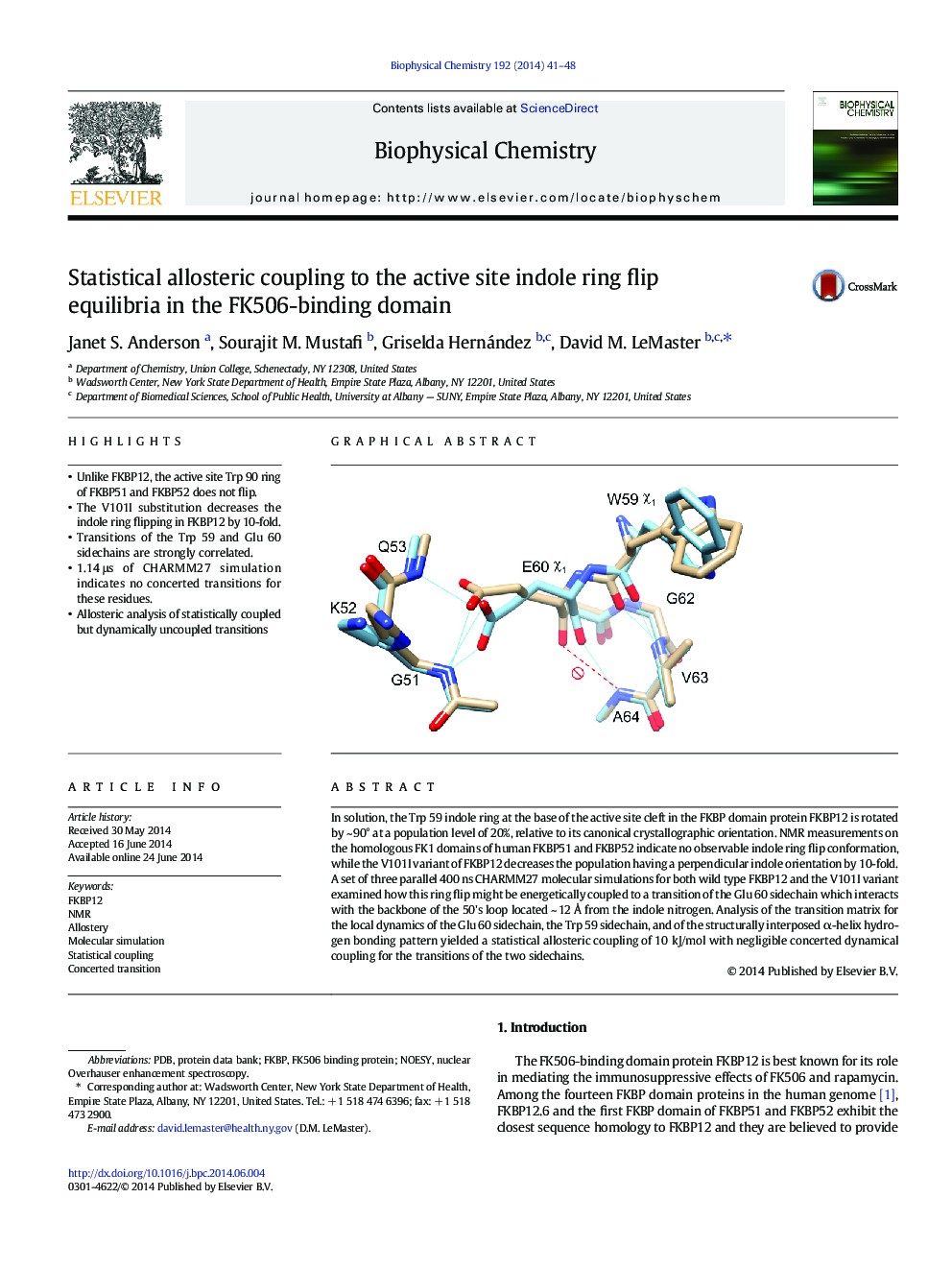| Article ID | Journal | Published Year | Pages | File Type |
|---|---|---|---|---|
| 5370977 | Biophysical Chemistry | 2014 | 8 Pages |
â¢Unlike FKBP12, the active site Trp 90 ring of FKBP51 and FKBP52 does not flip.â¢The V101I substitution decreases the indole ring flipping in FKBP12 by 10-fold.â¢Transitions of the Trp 59 and Glu 60 sidechains are strongly correlated.â¢1.14 μs of CHARMM27 simulation indicates no concerted transitions for these residues.â¢Allosteric analysis of statistically coupled but dynamically uncoupled transitions
In solution, the Trp 59 indole ring at the base of the active site cleft in the FKBP domain protein FKBP12 is rotated by ~ 90° at a population level of 20%, relative to its canonical crystallographic orientation. NMR measurements on the homologous FK1 domains of human FKBP51 and FKBP52 indicate no observable indole ring flip conformation, while the V101I variant of FKBP12 decreases the population having a perpendicular indole orientation by 10-fold. A set of three parallel 400 ns CHARMM27 molecular simulations for both wild type FKBP12 and the V101I variant examined how this ring flip might be energetically coupled to a transition of the Glu 60 sidechain which interacts with the backbone of the 50's loop located ~ 12 à from the indole nitrogen. Analysis of the transition matrix for the local dynamics of the Glu 60 sidechain, the Trp 59 sidechain, and of the structurally interposed α-helix hydrogen bonding pattern yielded a statistical allosteric coupling of 10 kJ/mol with negligible concerted dynamical coupling for the transitions of the two sidechains.
Graphical abstractDownload full-size image
